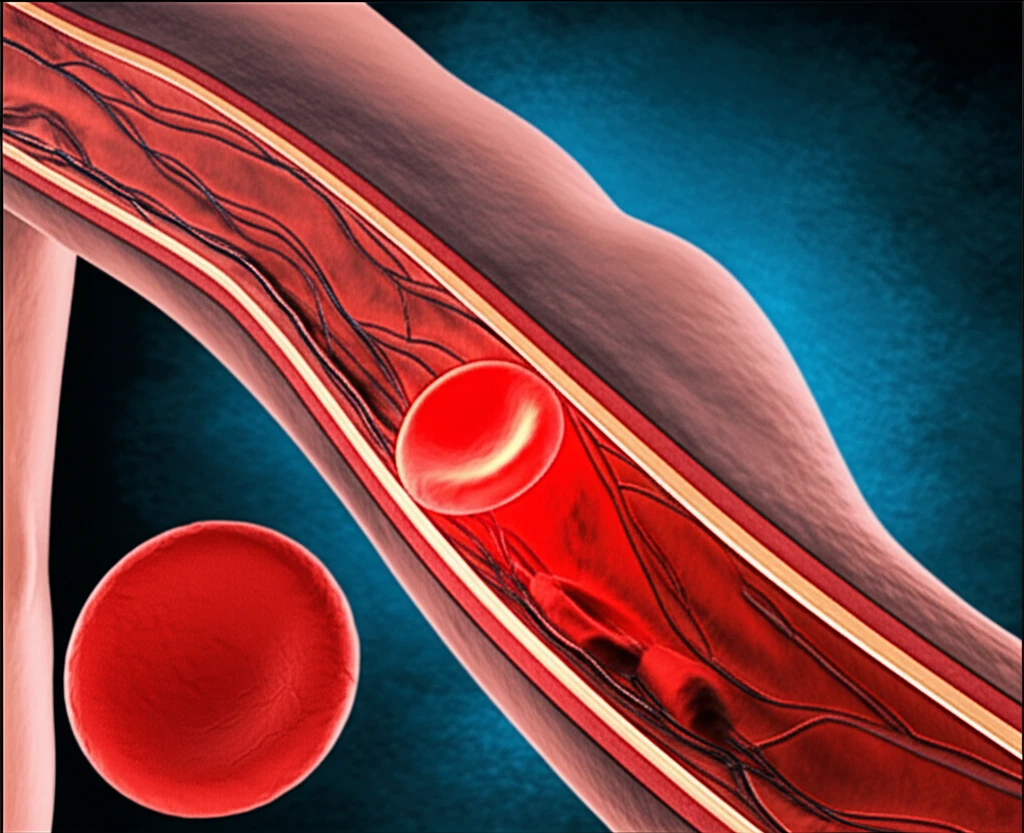
Decoding the Silent Threat: Understanding and Managing Deep Vein Thrombosis (DVT)
"Unveiling the Hidden Risks and Taking Control of Your Vascular Health"
Deep Vein Thrombosis (DVT) is a condition that affects millions worldwide, yet often goes unnoticed until it manifests with significant symptoms. As a serious form of venous disease, DVT involves the formation of blood clots in the deep veins, typically in the legs. These clots can impede blood flow and, if dislodged, travel to the lungs, resulting in a life-threatening pulmonary embolism (PE). Understanding DVT is crucial for early detection, effective management, and preventing potentially fatal complications.
The impact of DVT extends beyond the immediate physical symptoms. It can lead to chronic venous insufficiency, post-thrombotic syndrome, and significantly impact a person's quality of life. The good news is that with increasing awareness, advancements in diagnostic techniques, and improved treatment options, the outcomes for individuals affected by DVT are improving.
This comprehensive article will provide a detailed overview of DVT, covering its causes, risk factors, diagnostic methods, and treatment strategies. Our aim is to empower you with the knowledge you need to navigate this challenging condition and make informed decisions about your vascular health. Whether you're seeking information for yourself, a loved one, or simply aiming to enhance your understanding of health matters, you'll find valuable insights here.
Unmasking DVT: Causes, Risk Factors, and Symptoms

DVT is a multifaceted condition, influenced by a variety of factors. Understanding these factors is the first step in risk assessment and prevention. Blood clots form when blood flow slows down, blood vessel walls are damaged, or when the blood has a higher tendency to clot. A combination of these factors often leads to the development of DVT. Certain risk factors significantly increase the likelihood of DVT.
- Immobility: Prolonged periods of sitting, such as during long flights or bed rest, can slow blood flow and increase the risk.
- Surgery or Injury: Surgical procedures, particularly those involving the legs or abdomen, and injuries can damage blood vessels and trigger clot formation.
- Pregnancy and Postpartum: Hormonal changes during pregnancy, as well as the pressure of the growing fetus on the veins, elevate the risk.
- Hormone Therapy: Use of hormone replacement therapy or birth control pills containing estrogen can increase the risk.
- Genetics: Inherited blood clotting disorders, such as Factor V Leiden or prothrombin gene mutations, can make a person more prone to clots.
- Age and Obesity: Advancing age and obesity are associated with a higher risk of developing DVT.
- Smoking: Smoking damages blood vessels and increases the risk of blood clot formation.
- Certain Medical Conditions: Heart failure, cancer, and inflammatory bowel disease can increase the risk of DVT.
Empowerment and Prevention: Taking Charge of Your Vascular Health
DVT is a complex condition, but by staying informed and taking proactive steps, you can significantly reduce your risk and improve your outcomes. If you are at risk for DVT, discuss preventive measures with your healthcare provider. Adopting a healthy lifestyle, including regular exercise, maintaining a healthy weight, avoiding prolonged periods of inactivity, and quitting smoking, can contribute to overall vascular health. Early detection and prompt treatment are crucial for managing DVT and preventing serious complications. By working closely with your healthcare team, you can effectively navigate this condition and protect your long-term well-being. Your commitment to your health will make a positive difference.
